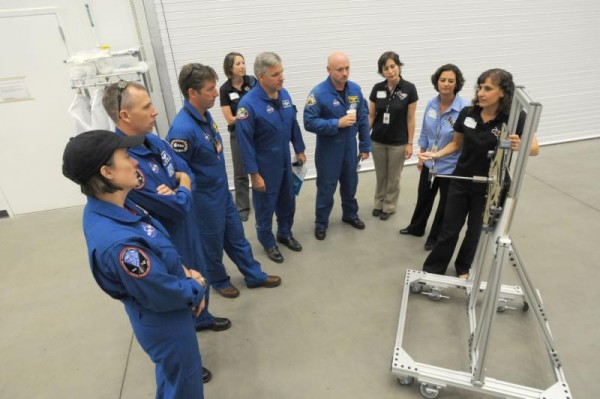Ball Aerospace develops flight computers for next-generation launch vehicles

Ball Aerospace & Technologies Corp. has completed development of prototype launch vehicle flight computers equipped to bring safety and reliability to future human spaceflight systems. These flight computers were financed by Ball Aerospace and are based on deployed units now being used by NASA’s Marshall Space Flight Center in their simulation laboratories to develop software and test systems for future human-rated launch vehicles. The computers are a critical part of the electronic command and control flight avionics system and are distinguished in their superior performance and NASA’s highest level human safety specification.
“These advanced avionics are directly applicable to future human exploration goals and objectives,” said Cary Ludtke, vice president and general manager of Ball’s Civil and Operational Space business unit. “We look forward to participating in future opportunities that leverage Ball’s technologies.”
Fault-tolerant computing is a key ingredient to human-rated launch vehicle architectures. Ball Aerospace’s flight computers are human-rated by design, and provide a low-risk path to flight for NASA’s Space Launch System or commercial crew launch systems. The flight computers contain significant advances in throughput performance, I/O interfaces, and fault detection. The design supports on-the-fly recovery of a failed flight computer based on hardware or flexible software voting.
Hardware and software technologies developed by Ball Aerospace for future human spaceflight include: the vision navigation sensor and the high definition docking camera used to support the successful Sensor Test for Orion Relative Navigation Risk Mitigation (STORRM) Development for the STS-134 mission; phased array antennas; avionic assemblies; and cryogenic storage.
Ball Aerospace & Technologies Corp. supports critical missions of national importance for the Department of Defense, NASA, NOAA and other U.S. government and commercial entities. The company develops and manufactures spacecraft, advanced instruments and sensors, components, data exploitation systems and RF solutions for strategic, tactical and scientific applications.
Ball Corporation (NYSE: BLL) is a supplier of high quality packaging for beverage, food and household products customers, and of aerospace and other technologies and services, primarily for the U.S. government. Ball Corporation and its subsidiaries employ more than 14,500 people worldwide and reported 2010 sales of more than $7.6 billion.
Forward-Looking Statements
This release contains “forward-looking” statements concerning future events and financial performance. Words such as “expects,” “anticipates,” “estimates” and similar expressions are intended to identify forward-looking statements. Such statements are subject to risks and uncertainties which could cause actual results to differ materially from those expressed or implied.
The company undertakes no obligation to publicly update or revise any forward-looking statements, whether as a result of new information, future events or otherwise. Key risks and uncertainties are summarized in filings with the Securities and Exchange Commission, including Exhibit 99.2 in our Form 10-K, which are available on our website and at www.sec.gov.
Factors that might affect our packaging segments include fluctuation in product demand and preferences; availability and cost of raw materials; competitive packaging availability, pricing and substitution; changes in climate and weather; crop yields; competitive activity; failure to achieve anticipated productivity improvements or production cost reductions; mandatory deposit or other restrictive packaging laws; changes in major customer or supplier contracts or loss of a major customer or supplier; and changes in foreign exchange rates or tax rates.
Factors that might affect our aerospace segment include: funding, authorization, availability and returns of government and commercial contracts; and delays, extensions and technical uncertainties affecting segment contracts.
Factors that might affect the company as a whole include those listed plus: accounting changes; changes in senior management; the current global recession and its effects on liquidity, credit risk, asset values and the economy; successful or unsuccessful acquisitions; integration of recently acquired businesses; regulatory action or laws including tax, environmental, health and workplace safety, including U.S. FDA and other actions affecting products filled in our containers, or chemicals or substances used in raw materials or in the manufacturing process; governmental investigations; technological developments and innovations; goodwill impairment; antitrust, patent and other litigation; strikes; labor cost changes; rates of return projected and earned on assets of the company’s defined benefit retirement plans; pension changes; reduced cash flow; interest rates affecting our debt; and changes to unaudited results due to statutory audits or other effects.
